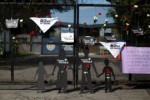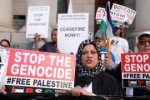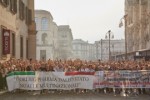Candid street photos showcasing amazing looks
How street-style photography has evolved from the Edwardian era to today. Now it is exploding – and turning fashion upside down.
Jessica Chastain, Daisy Edgar-Jones and Parker Posey were among the stars attending the recent autumn/winter 2025 Gucci fashion show, but the photographers weren't chasing them down outside. Instead, they jammed the ancient, moss-cracked alleys of Milan shouting, "Chloe!" "Chloe!".
"It still makes me nervous," says the Chloe in question, a Boston-born stylist and retail director named Chloe King who has become the fashion industry's version of a reality star: a street-style star. "It's not an easy job," King tells the BBC. "But I think street style really is the best part of fashion, because it's people living and breathing it, and customising their outfits to their personalities, not just what they're shown on a runway."
"People got very obsessed with street style outside of fashion shows about 10 years ago," says Vogue photographer Acielle Tanbetova, known online as Style Du Monde. "It kind of dawned on everyone that putting on your own clothes could be more exciting than copying what's on a runway. And that's really revolutionised the industry."
Today, mass-market brands like Gap and J Crew shoot campaigns that mimic street-style shots, while luxury labels like Tod's and LaPointe stage catwalk shows created to look like casual strolls through Milan and Manhattan. "People see themselves reflected in street style a lot more," says King, noting that street style allows women of all sizes to participate in fashion's dreamworld, even as casting of plus-size runway models is on the decline. "You need all of these voices and points of view to accurately reflect what's going on in fashion – you need a really diverse group of photographers outside the shows, because they each bring a unique eye."
That sense of inclusion is a throughline from today's street-style photographers back to the genre's early pioneers. Before street style became fashion's favourite way to translate trends in real life, it was a rare point of entry for women seeking to enter the world of photography.
First seen in women's magazines in the early 1900s, early street-style photography centred on aristocrats at French racetracks and seaside retreats. Most iconic: the graphic black-and-white striped dresses by French photographer Jacques-Henri Lartigue, which ran in the fashion publication Les Modesin 1912, and served as inspiration for Cecil Beaton's My Fair Lady costumes in 1964.
While Lartigue was shooting the gowns of socialites at the Auteuil racecourse, Scottish photographer Christina Broom was photographing a broader spectrum of women's fashion across the British Isles. That included the all-white suffragette skirts of women's rights marchers, the cinched-waist jackets of London's first female police brigade and the tartan wraps of Labour politicians like Barbara Ayrton-Gould. (She wore the giant accessory in 1909 while supporting worker's rights for fishermen. Today, Grazia global editor Joseph Errico says, "She looks like she's in a Burberry ad.")
More like this:






















 Toi Staff
Toi Staff Gideon Levy
Gideon Levy Tarik Cyril Amar
Tarik Cyril Amar Dr Ramzy Baroud
Dr Ramzy Baroud Rachel Marsden
Rachel Marsden Belen Fernandez
Belen Fernandez Muhannad Ayyash
Muhannad Ayyash Somdeep Sen
Somdeep Sen Yara Hawari
Yara Hawari Stephanie A. Sarkis Ph.d
Stephanie A. Sarkis Ph.d Maximilian Hess
Maximilian Hess Santiago Zabala
Santiago Zabala
